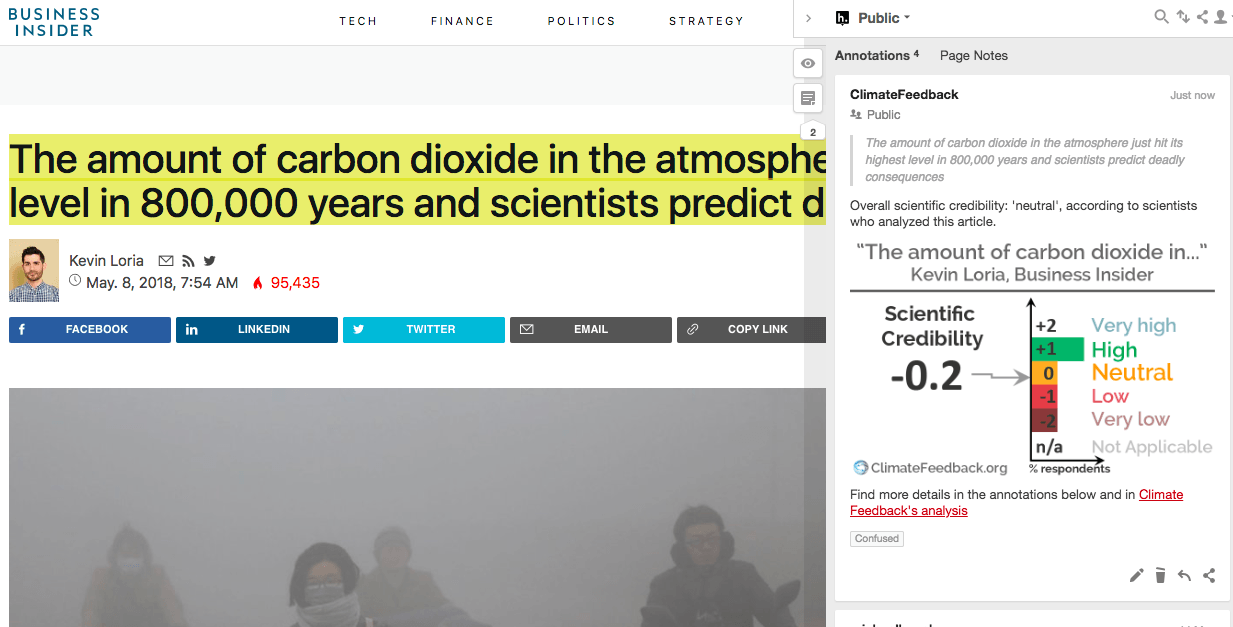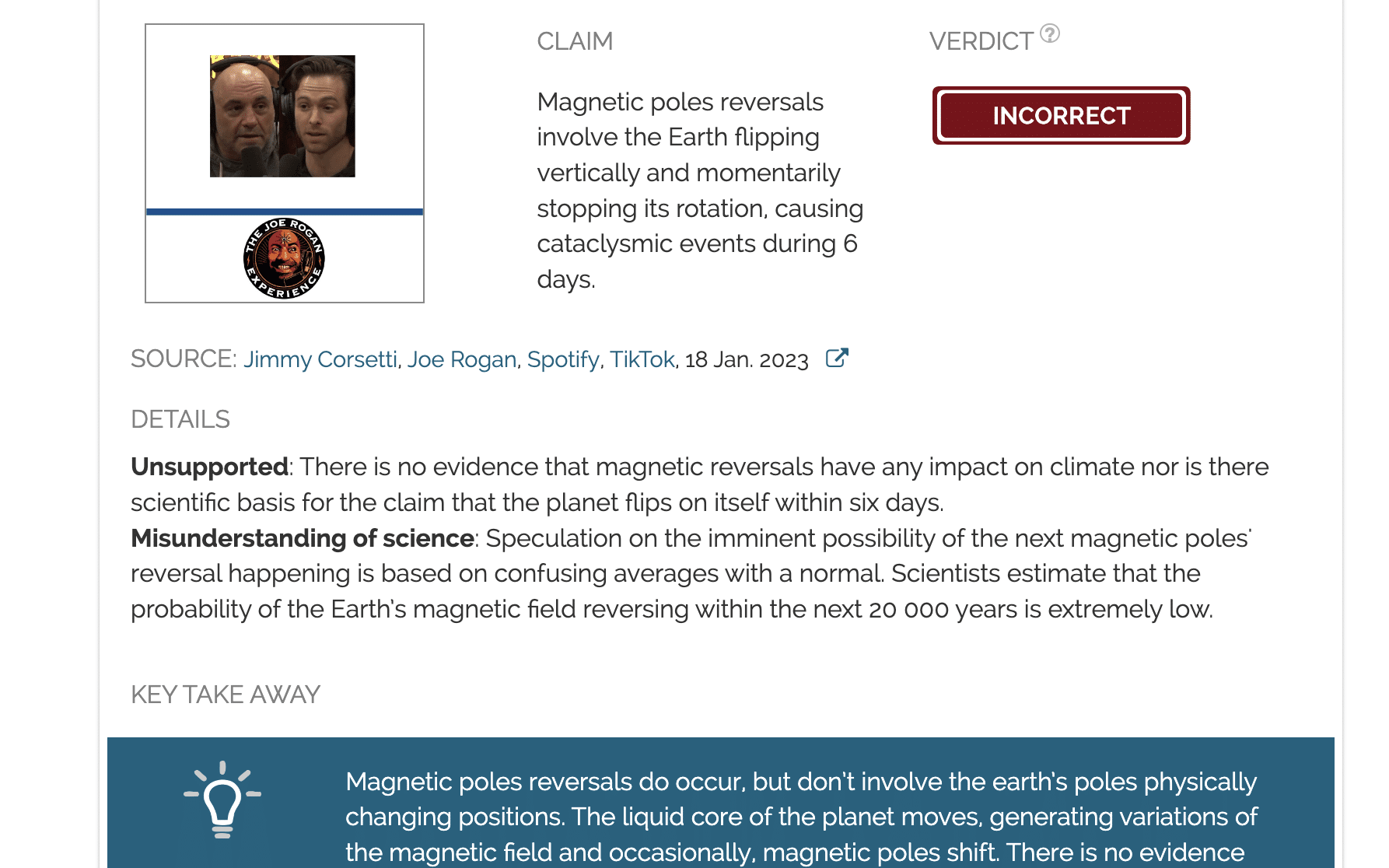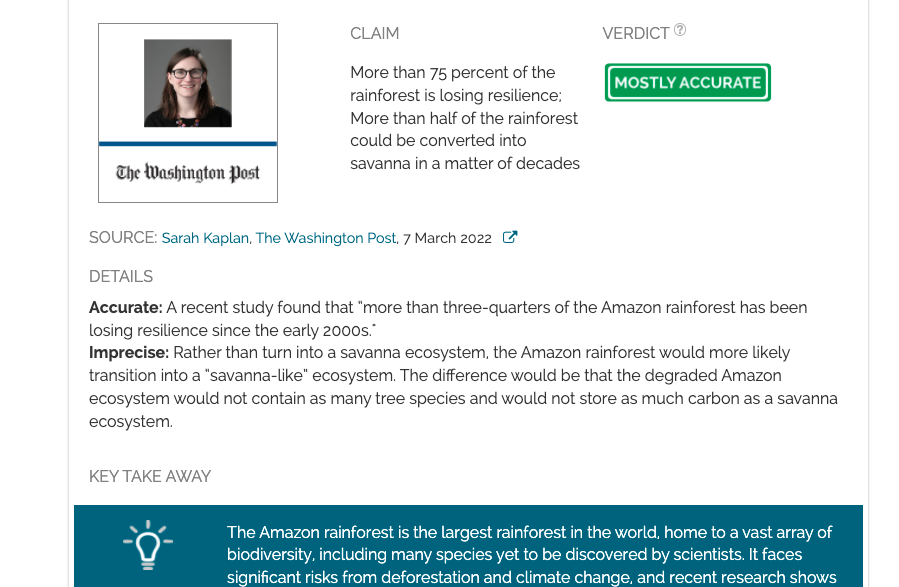- Climate
Business Insider highlights health impacts of climate change, but some aspects are misleading
Reviewed content

Headline: "The amount of carbon dioxide in the atmosphere just hit its highest level in 800,000 years and scientists predict deadly consequences"
Published in Business Insider, by Kevin Loria, on 2018-05-08.

Scientists’ Feedback
SUMMARY
This article at Business Insider describes the impacts of climate change on human health which covering the fact that the concentration of CO2 in the atmosphere recently passed 410 parts per million.
Scientists who reviewed the article found that many of the listed impacts were described accurately and supported with links to relevant published studies. However, cited numbers for current deaths due to common air pollutants and the concentration at which CO2 itself can impact brain function are misleading. In their comments, the scientists provide context for interpreting these numbers. Additionally, the article’s language conflates CO2’s effect as a climate-changing gas with the direct health effects of other pollutants.
See all the scientists’ annotations in context
GUEST COMMENTS

Lecturer/Visiting Scholar, The Open University, Xi’an Jiaotong-Liverpool University
The article’s title point that CO2 levels are now the highest in 800,000 years is correct.
The health cost and deaths caused by climate change are underestimated. We are talking millions here, mostly in the poorer countries, linked to food and water security and to spread of infectious vector borne diseases (Dengue, Malaria).
There’s confusion with air pollution–a common confusion. However, air pollution is an additional burden caused by particulates, surface O3, and NOx, etc. in the air, which will be exacerbated by climate change causing untold misery to hundreds of millions of people.

Professor, The University of British Columbia
Instead of improving clarity regarding climate change/warming/CO2 emissions and impacts, this article increases confusion by mixing direct impacts of CO2 and warming with indirect impacts related to warming and impacts (e.g air pollution) arising from some of the same sources as those responsible for much of the CO2 emissions. The article focuses on CO2 levels and suggests that CO2 itself (as opposed to climate change) is directly responsible for much of the impacts arising from these emissions—this is misleading and the article barely mentions the impact of CO2 on climate.
REVIEWERS’ OVERALL FEEDBACK
These comments are the overall opinion of scientists on the article, they are substantiated by their knowledge in the field and by the content of the analysis in the annotations on the article.

Professor, University of Washington
While it is positive that the author discussed the adverse health consequences of climate change, it appears the author selected studies projecting particularly high consequences. Other studies of how climate change could affect the same health outcomes project fewer injuries, illnesses, and deaths than those cited in the article, and project much lower risks when including adaptation and mitigation. The statement that 9 million people died prematurely from pollution-related diseases refers to more than just air pollution; the paper stated that in 2015, 4.2 million died prematurely from ambient particle pollution and 0.3 million from ambient ozone pollution*.
The cited study on cognition reported that ambient carbon dioxide can affect human decision-making performance at concentrations of 1,000 ppm and 2,500 ppm, from a baseline of 600 ppm. Assuming a rate of increase of carbon dioxide equivalent to the last five years (10 ppm in 5 years), it would be another 300 years before ambient concentrations exceed 1,000 ppm.
- Landrigan et al (2017) The Lancet Commission on pollution and health, The Lancet

Associate Professor, University of North Carolina at Chapel Hill
The article draws attention to the high CO2 at present and the health risks of climate change, but it gives the incorrect impression that breathing CO2 directly is a major cause of concern. The most important health effects of climate change—heat stress, vector-borne diseases, air pollution, access to food and water, severe storms, displacement—do get some discussion here.

Research Fellow, University of New South Wales
To me, “CO2 levels could lead to tens of thousands of pollution-related deaths” sounds quite misleading because it seems to say people may die as a direct consequence of CO2 pollution (i.e., being poisoned?), but this is certainly not the case at the 550 ppm concentration mentioned later.
No doubt that increasing CO2 leads to warming—and this will cause rising sea levels and more intense and more frequent heat waves. “Superstorms” is less clear as to what the author means; there are no clear conclusions about the intensity of storm systems, but it is plausible and likely that the precipitation related to intense storms will increase due to the higher water holding capacity of warmer air.

Postdoctoral Researcher, GFZ Helmholtz Centre Potsdam
I think in general this article is pretty good—there are many links to peer-reviewed scientific studies in there, and in general the authors have done their homework. The writing suggests the author has a sufficiently clear understanding of the science, and doesn’t over extrapolate from the data. However, I think there are a few lapses in the article that display a tendency to over-hype.
For instance, one of the few times where the author doesn’t provide a reference is when they suggest a very high climate sensitivity to CO2 rise—+6˚C when we get to 550 ppm. I think this figure was taken from one of the other articles linked in this article, but in turn that article provides no reference for this claim. It’s a very high estimate compared to most models, and might betray a tendency of the author to emphasise the catastrophic.
However, there are a lot of legitimate points in there, and since this lapse doesn’t constitute a central part to the story, I think it would be unfair to describe the whole article as of low credibility.
Notes:
[1] See the rating guidelines used for article evaluations.
[2] Each evaluation is independent. Scientists’ comments are all published at the same time.
Annotations
The statements quoted below are from the article; comments and replies are from the reviewers.
Research indicates that if unchecked, increased CO2 levels could[…] reach a point at which it slows human cognition

Postdoctoral Researcher, GFZ Helmholtz Centre Potsdam
This is perhaps over-stated here. The study that the writer is citing studied behaviour in an office environment at 600, 1000, and 2,500 ppm. The prospect of 2,500 ppm CO2 in the atmosphere is, I would hope, quite some way off (it is beyond the vast majority of projections for 2100 for example).. so this seems a little excessive here. If CO2 gets to 2,500ppm, I’m pretty certain it’s not going to be the reduced performance in decision-making performance that kills us!
There’s a debate among scientists about the last time CO2 levels were this high.

Postdoctoral Researcher, GFZ Helmholtz Centre Potsdam
It’s probably fair to say that there remain a few disagreements, but the community is largely moving toward acceptance that the Pliocene was likely around this high (see e.g. www.p-co2.org). Nothing really strictly wrong with this passage, although I think most would agree the Pliocene is more likely than the Miocene.
Some experts think we’re on track to hit 550 ppm by the end of the century, which would cause average global temperatures to rise by 6 degrees Celsius

Postdoctoral Researcher, GFZ Helmholtz Centre Potsdam
This assumes a very high climate sensitivity compared to most IPCC-class models. Can the authors give a source for where they got this estimate? It appears to be a quote from the previous link, which itself has no reference either. Most estimates tend to fall around 3 ˚C/doubling, and 550 is ~1 doubling of CO2 vs. pre-industrial of 280 ppm. So that would suggest ~3˚C total, of which maybe 1 ˚C has already happened. Maybe one saving grace here is that 550 ppm is perhaps one of the more conservative estimates for the end of the century.



